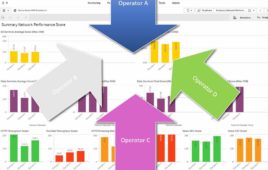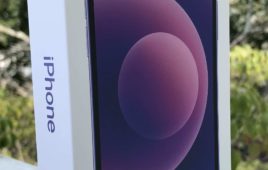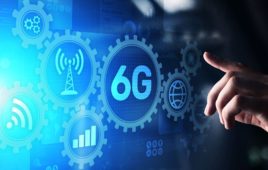The recent devastation caused by Hurricanes Harvey, Maria and Irma in the U.S. highlighted the continued susceptibility of telecom networks to natural or manmade disasters.
In an effort to ensure that first responders remain able to communicate during times of crisis, the federal government established the First Responder Network Authority, which would set aside spectrum dedicated to emergency services, in 2012. AT&T was awarded the federal contract to build the FirstNet network, and states and territories have until late December to either opt into FirstNet or consider alternative proposals from other companies.
Chris Sambar, the senior vice president at AT&T Business Solutions’ global public sector division, is responsible for overseeing the company’s FirstNet contract and business model. He recently spoke with Wireless Week about the company’s winning bid, the infrastructure requirements of the program and the states that remain undecided about opting into the network.
Wireless Week: What states or parts of the country do you think will benefit most from FirstNet?
Chris Sambar: As the only network purpose-built for — and with — public safety, we believe every state and territory equally stands to benefit from FirstNet. Emergencies aren’t confined to state or territory lines. Disasters, both natural and manmade, can happen anywhere. It’s our goal to serve every first responder in the country, giving them access to a nationwide, interoperable and high-speed public safety broadband network dedicated to their needs.
The recent hurricanes underscored the potential benefits of FirstNet. AT&T has one of the nation’s largest and most advanced network disaster recovery programs to assist public safety communications before, during, and after a natural disaster. With FirstNet, the support we provide to public safety during these situations will be even better. Not only will first responder subscribers have priority and preemption on the network along with access to advanced communications tools, but we’re also giving FirstNet subscribers access to 72 dedicated network assets that can be deployed to support their emergency communications needs during situations. The FirstNet team we’re building will be filled with previous first responders and public safety officials. So when disasters strike, we’ll know what first responders need because our team has actually walked in their shoes.
WW: Participation is still unaccounted for in a large portion of the country. What are some of the main factors or concerns states are weighing in their decision to opt in or not?
CS: We’re honored that governors across more than half of the country’s states and territories have already made the decision to opt into the program. It shows that states and territories recognize value within the FirstNet and AT&T solution. As such, they — states opting into program — have been moving quickly to give their first responders and public safety personnel access to the advanced communications tools they need for protecting their communities and save lives. Plus, seven of the 33 opt-ins we’ve announced have come from states that issued RFPs as part of their exhaustive due diligence, recognizing that we bring their public safety personnel the overall best value solution with the least risk. [Those] states are Alabama, Arizona, Georgia, Michigan, North Carolina, Oklahoma and Pennsylvania.
States have cited low-risk, expanded coverage, increased network capacity, and immediate access to mission-critical capabilities as key drivers behind their opt-in decisions. Key considerations we hear as states continue to explore their decision include coverage — should AT&T have the honor to build all 56 [radio access networks] in the states and territories, we estimate that combining our LTE network with rural telecommunications networks, deployable and additional satellite technology will cover over 99 percent of the U.S. population and its geography — [and] cost. Rates for FirstNet will be extremely competitive. These figures may vary for different agencies, as there is no one-size-fits-all solution given that they each have unique needs and operations.
WW: Upon awarding the FirstNet contract, what was the one distinguishing factor that separated AT&T from other prospective bidders?
CS: The needs of public safety demand more than what commercial offerings provide today. That’s why there was a rigorous bid process for earning the honor to serve public safety and bring this community a network designed to their specifications and requirements. While this question would be best addressed by FirstNet, our selection confirms FirstNet’s determination that we proposed the best overall value solution for building the nation’s first broadband network dedicated to public safety.
WW: As of October 25th, five of the six most-populated US states — California, New York, Florida, Illinois, Ohio — are among the most noteworthy holdouts. What, if any, correlations are emerging regarding FirstNet participation and states with large populations?
CS: Each state has its own decision process and cycle. We are working with each of them to address any questions or concerns as they work through their review. Plus, larger states have more constituencies, which typically translates to longer decision cycles. However, geographically larger states like Texas, along with densely populated states like New Jersey, have opted in already. We also announced Georgia’s decision to opt in this morning, and this week, the Florida FirstNet Executive Committee recommended that Florida opt in as well.
(Editor’s note: AT&T announced on Nov. 30 that Ohio opted into FirstNet.)
WW: What are some of the biggest determining factors AT&T is using when deciding what parts of the country need additional bandwidth capacity to deploy network infrastructure on the Band 14 spectrum FirstNet will utilize?
CS: We’re embarking on an aggressive, nationwide new site build plan with FirstNet to bring first responders the coverage and capacity they need. In addition to deploying Band 14 on most of our existing sites, including those that are at or near capacity, AT&T will deploy Band 14 on new sites to cover rural areas that are today unserved or underserved.
WW: What kind of infrastructure needs to be put in place for the deployment of FirstNet and how quickly do you expect building to begin?
CS: When governors accept the FirstNet-AT&T state plan, we are able to make our existing LTE network available to FirstNet first responder subscribers in that state, immediately providing them with quality of service and priority access. In addition, these states are taking advantage of the new choice. With thousands of connections on the network, a number of first responders are already experiencing the early benefits of FirstNet. We’re also moving quickly to make the FirstNet build a success and have already started the build process in states that have opted into the network.




